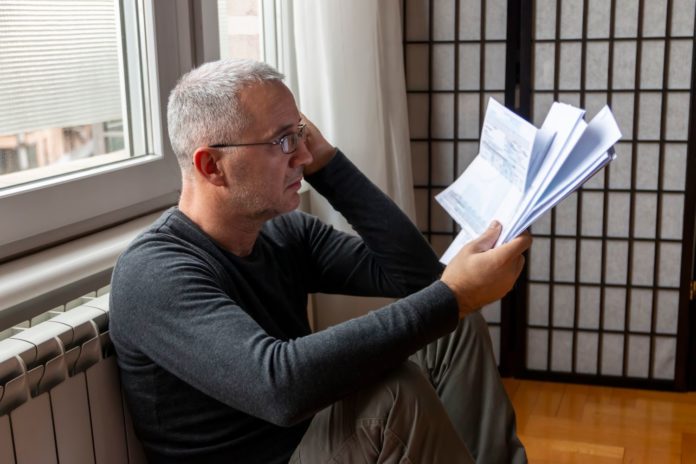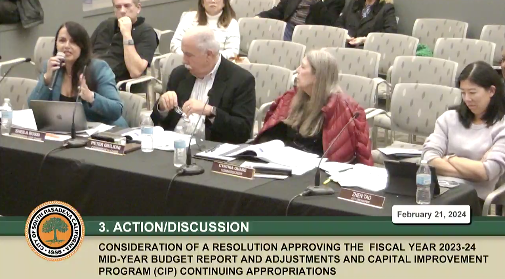
South Pasadena, which four years ago opted to rely solely on renewable power for city operations under the Clean Power Alliance’s (CPA) “100 percent Green Power” product, is set to reconsider that decision at a City Council meeting May 1.
The meeting will feature a presentation from CPA leadership which, faced with skyrocketing prices for clean energy, has been exploring strategies to reduce demand for renewable power.
The matter comes during a period of scrutiny over ongoing deficits in the city’s general fund. Finance staff has submitted a list of proposed reductions and “revenue generating opportunities.” Meantime, community concern has grown in the absence of definitive information about trends in how much the city pays CPA for energy, and how those bills compare to what it would pay if it took service from SCE.
“As we all feel in our personal lives, costs are going up everywhere, utilities included,” Deputy City Manager Domenica Megerdichian said in an email. At the May 1 meeting staff will seek Council direction on whether “to continue with CPA at the highest ‘Green energy’ level”–the most expensive of the CPA’s three energy products–or “consider lower ones.”
For three or four months now, the city’s Finance Commission has been asking for records on what the city pays for electric service, according to Finance Chairman Peter Giulioni. Some on the Commission “believe it may not have been wise” to go with CPA in the first place. “It may be time to transition back” because the switch “has not provided the savings that were anticipated [and/or] the reason for the transition has played out.”

A decision to downgrade or eliminate CPA participation would be a major policy shift for South Pasadena that could undermine its environmental credentials. The city promotes its CPA membership as among the ways it’s “established itself as a leader in sustainable practices.” Its participation is mentioned repeatedly in the South Pasadena Climate Action Plan and its legislative platform, adopted just two months ago, has three pro-renewable energy planks, including two that support community choice aggregators (CCAs) like CPA.
South Pasadena has had a high profile in the CCA movement. It was the second municipality to join CPA, which now provides 3.5 million megawatt-hours to over a million customers in nearly three dozen Southern California communities, recently being recognized as the “number one green power provider leader in the nation.” Former South Pasadena Mayor Diana Mahmud helped lead CPA’s creation, is CPA’s immediate past chair, and the organization named its downtown LA Board Room in her honor.
Council Member Jon Primuth represents South Pasadena on the CPA board. Asked his position on the future of the city’s level of commitment, he demurred. But in an email he wrote, “I’ve analyzed my CPA charges several times and they have been lower than SCE. I am looking forward to the discussion.”
While CPA supplies the power used by its South Pasadena customers, SCE delivers it and produces the bills, which include separate line items for the cost of power, delivery and related fees and taxes.
While the city reports its remittances to SCE as “utility” expenditures, its budgets, spending updates and warrant reports do not break out what portion of those amounts are for energy purchased from CPA or how they are trending.
Last week, the CPA declined the South Pasadenan News’ request to release the data, citing “customer confidentiality”. The city, in turn, argued it did not have “jurisdiction” to authorize CPA’s release of the data.
The city allocated $1.46 million in the current budget year for utility costs. And over the past 22 months, according an analysis of its public warrant reports, it’s made payments to SCE totaling $2.56 million, an annual average of $1.3 million.
When South Pasadena first elected to sign up for CPA’s Green Power product in 2019, then-finance director Craig Koehler said it would add approximately $100,000 to what he said was the city’s “roughly” $800,000 annual electric bill. But that didn’t include what the city pays under a separate account for power used for pumping at its water facilities—typically about $600,000 per year. During the same meeting, Council Member Michael Cacciotti said he recalled the city’s annual electric bill was $1.2 million in 2008, before implementation of a set of energy efficiency measures.
More recently citizen Chris Bray implored the City Council to withdraw from and criticized CPA’s business practices. In defense he offered an analysis “summarizing” what he said was data from a report NHA Advisors prepared for the city projecting significant general fund deficits. Bray said the data shows city “spending on utilities has grown by 400 percent” over the past six years.
But some figures in Bray’s analysis do not comport with actual spending reported in the city’s budgets, which if accurate would minimize the alleged growth in spending. In addition, Finance Commission Chair Giulioni, while strongly advocating use of NHA Advisors’ model in budget development, has said the information used in the model to generate its worrisome deficit projections was not well-vetted.
South Pasadena Acting Deputy City Manager Luis Frausto told the South Pasadenan News that the May 1 CPA presentation “will cover the city’s current utility product selection and provide a comparative analysis of the rates between CPA products and those offered by SCE.”
The city has also engaged a consultant to conduct a review of its electric billings to identify overcharges, inaccuracies, anomalies and overlooked incentive programs to find potential opportunities for savings or refunds. The contractor, Utility Cost Management LLC, will get 42 percent of identified savings.
In early 2018, South Pasadena began taking electric service from the CPA under its “Clean Power” product, which is 50 percent renewable and greenhouse gas (GHG) free. The staff report noted this was substantially better than the 34 percent renewable mix then offered by SCE–and at a rate 3 percent below SCE.
In February 2019, staff recommended staying at the 50 percent level. But after a public hearing during which every speaker urged the city to set its sights higher, Council voted unanimously to upgrade to the CPA Green Power rate, providing 100 percent renewable energy. Staff projected this would result in paying rates that would on average be 8 percent higher than SCE.
Since then, the value proposition has changed. According to its most recent sustainability report, 45 percent of power SCE delivers is from carbon-free resources (8 percent of which is nuclear), while an “unspecified” variable portion of the remainder is also carbon-free. That means SCE’s base mix can generally be relied on to be at least as carbon-free as both CPA’s “Lean Product,” which is 40 percent GHG free, and its “Clean Product,” which is 50 percent GHG free.
And while both providers face upward rate pressure, their cost profiles differ. Like other investor-owned utilities, SCE is exposed to higher costs such as managing the risk of wildfires caused by its transmission lines. The non-profit CPA owns no transmission or distribution, but has greater exposure to the renewable market.
Prices for short-term renewable and carbon-free energy have increased five-fold over the past two years, according to an April 4 CPA rate outlook presentation. Factors driving the increase include slowdowns in the construction of new resources due to supply chain interruptions, growing grid connection waits, and a set of market pressures driven by the rising targets for renewable and carbon-free power adopted both in California and neighboring states.
Consequently, the CPA has been contemplating renewable energy demand reduction strategies, including lowering the renewable content of one or both of its Lean and Clean products.
Nevertheless, CPA rates director Karen Schmidt told the board CPA will be able to maintain competitive rates. In June, the board is slated to adopt a new rate schedule. The CPA has also indicated it intends to lower rates in 2025 after reaching reserve targets. It also expects renewable prices to begin declining at that time.
To know more about how the Clean Power Alliance (CPA)
is engaged with the City of South Pasadena
CLICK HERE
Vote on Power | City Council is Moving to 100% CPA Supply for Businesses















.png)






